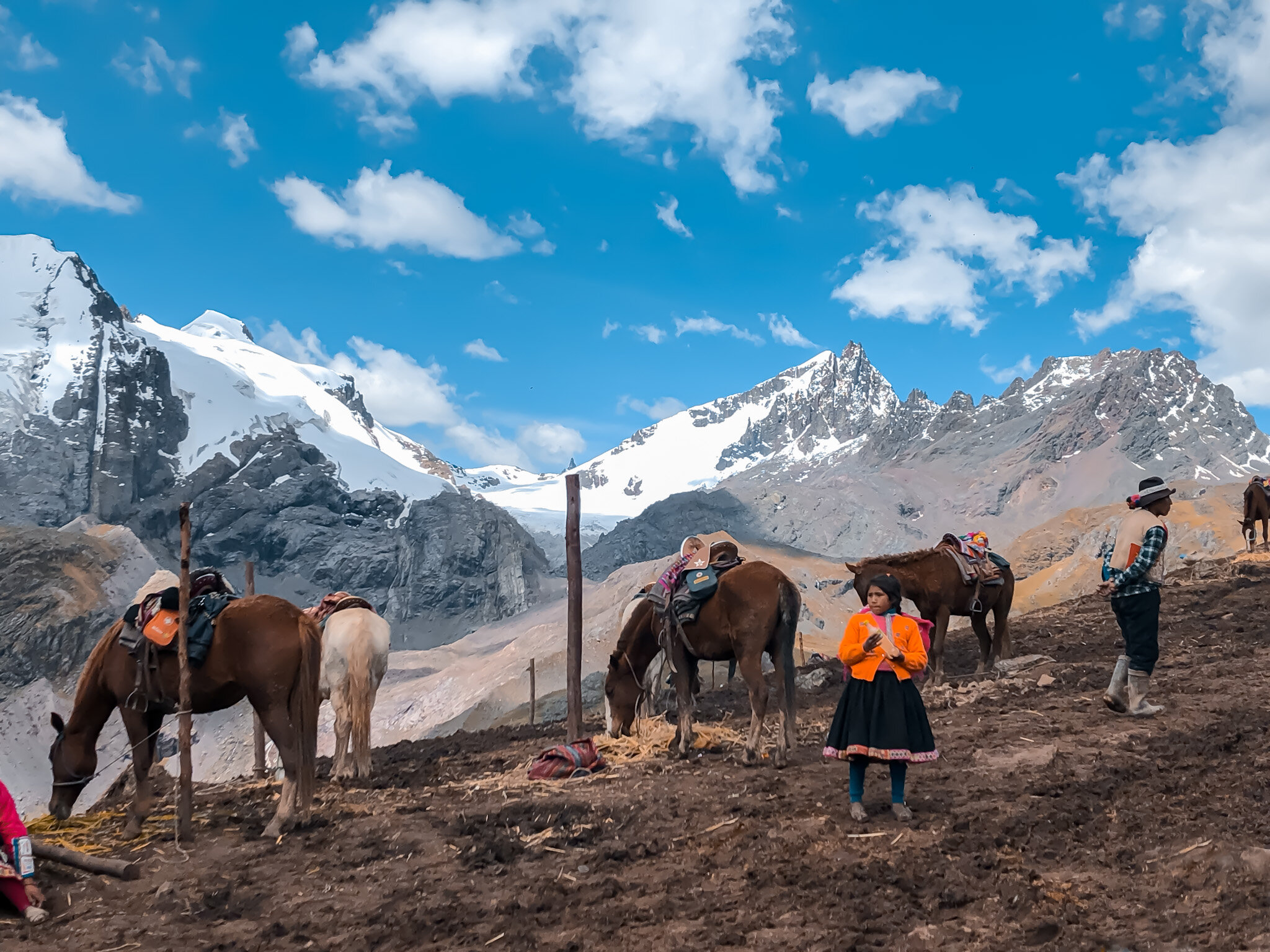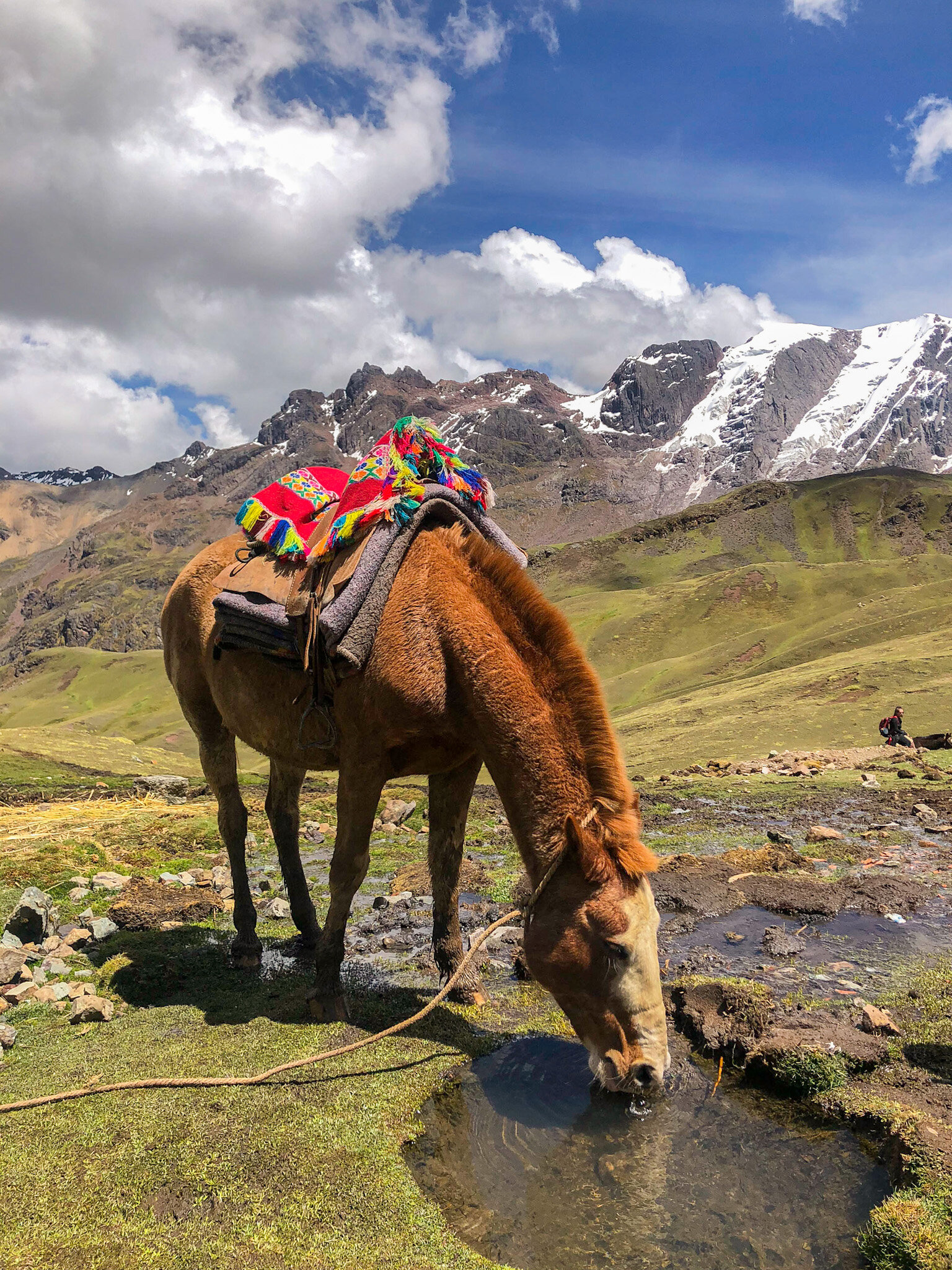Stairway to heaven
Pitumarca, Canchis Province, Peruvian Andes
06:00 LT - Our time in Peru is coming to an end and this will be our last adventure before exploring the beauty that Argentina has to offer.
Our last effort here is to hike the roughly equivalent height of the Everest Base Camp. I wasn’t feeling extremely concerned about the trek as I have always been active and sporty throughout my life. However, I asked my doctor back in Hong Kong to provide me with some high-altitude sickness pills, should it be necessary.
The van picked us up from where we are staying in Cuzco. Driving through the local area gave us a brief chance to have a distant insight into what the local life in the Peruvian small communities is like. Eventually, we left civilisation behind, making our way across the countryside through narrow gravel streets and massive potholes. The scenery gradually became greener, opening up to stunning untouched alpine panoramas.
As we approach our destination, our guide briefs us on the effect of high altitude, how it affects our body, and how fatal it can be. The three key points we drew were: correct breathing, steady pace, and to walk down if you felt ill. He would have emergency oxygen should it be necessary.
Halfway through the drive to the 3600m altitude starting point, we meet a friendly group of locals that greet our van in the sweet company of their crias. We stop briefly to drink some water and to breathe some of the cleanest air my lungs have ever experienced. A young brother and sister approach me, smiling while holding their little friends. I ask their names and if I could take a photo of them. They agree, and I leave a small tip before getting back into the van.
We finally reach our destination and get ready to begin our hike to what the locals call “Cero de siete colores,” which translates into “Rainbow Mountain”. We make our way among all the vans and some surprisingly big tour buses that made it up here. The path leads towards a wide uphill slope, where horses and locals are gathering to provide a means of transport for those who want it.
A quick photo with the Andes in the background, then armed with lots of spirit, we start our journey towards a shallow green trail.
We pick up a steady pace as instructed. I look at my watch, my pulse is 110 bpm as my body tries to compensate for the high altitude. I don’t pay much attention and carry on. As we walk along, I realise how every breath doesn’t seem to reach my lungs. I start to hyperventilate at short intervals trying to oxygenate the blood as best as I can at this relatively lower altitude. This seems to do the job temporarily. I feel like stopping at times but I am aware that starting again would require more energy than keeping a very slow pace.
Passing the halfway mark is the equivalent of being at the top of Mont Blanc, which feels quite satisfying. I stop for a toilet break and open my chocolate bar to pump some sugar into my system. After 5 minutes, I set foot again slowly for the second half of the hike.
I perceive how everyone’s pace has noticeably slowed down as a result of the thinner air affecting the breathing. Everybody on the trail has now turned quiet. Many have requested the help of the locals, mounting on the horses. Others decided to turn around and quit the mission. A fit couple breeze past everyone else while trail running, testing their endurance abilities.
My pace slows by the minute, followed by an onset of a headache. Starting from the lower back of my neck, it pushes up towards my lower skull; still light but slowly increasing in intensity. I am now trying to get as much air as possible by breathing deeply and vigorously almost every step of the way. The headache increases and pushes up towards the top of my head. I start to feel a slight stomach-ache, but my symptoms do not deteriorate further.
I am now steadily lightheaded. My vision is hazy, but I am still aware and in control of my actions.
We are now at the base of the summit, and the last 500m to the peak are quite steep. Many people are now sitting down, breathing the oxygen provided by the guides but I am aiming for that last push to glory.
On the uphill, I walk past another guy. Head down, heavy breathing. We raise our heads, look at each other’s struggle, chuckle in solidarity to remind us of why we are doing this, and keep walking.
On the last turn before reaching the top, a group of three guys that are part of our tour are dragging their friend up the hill, who is seconds away from passing out. Shortly after, I hear our guide coming to deal with the situation. I realise that I am perhaps getting used to feeling this groggy, but I can’t wait to go back down, where I can breathe and feel normal again.
We finally reach the top. A three hundred and sixty degree view from the little plateau shows nature in its entire beauty. Behind us, the highest peaks of the range are fully covered in snow, and ahead of us, the Rainbow Mountain reveals its spectacular colours. My sight is drawn down the Red Valley, as far down as my eyes could see across the Andes. A small wooden sign beside us reads: “ Montaña Winikunka 5200m AMSL” (17,100 ft).




